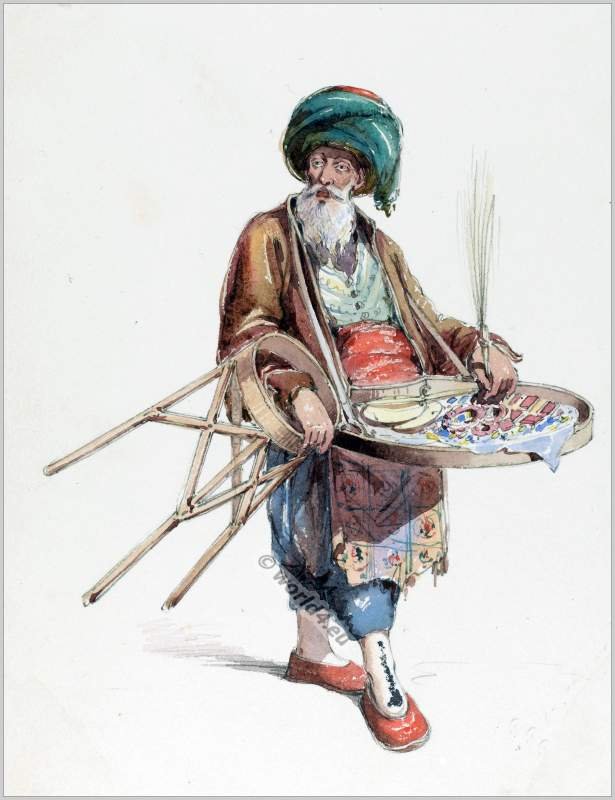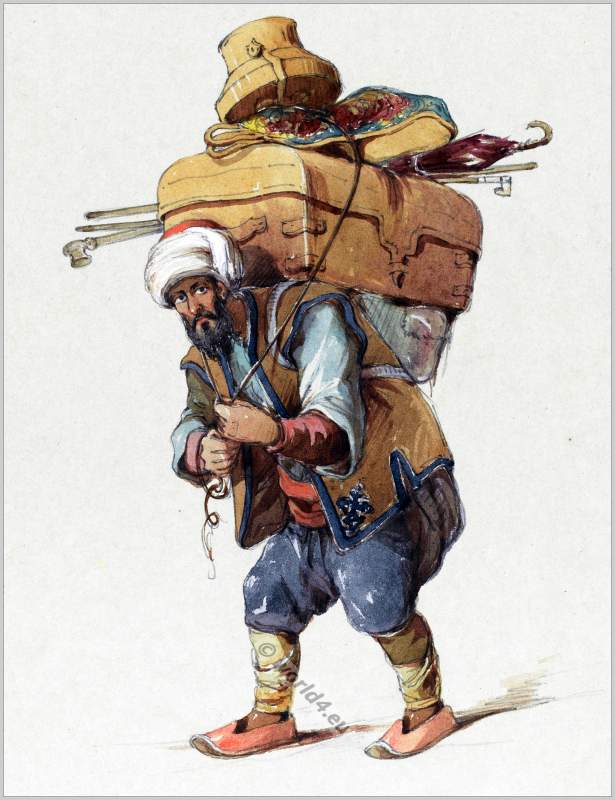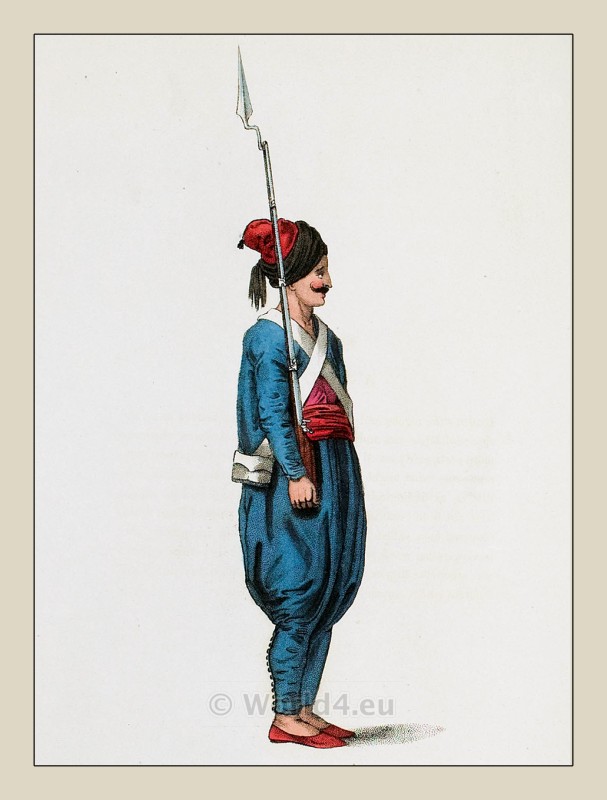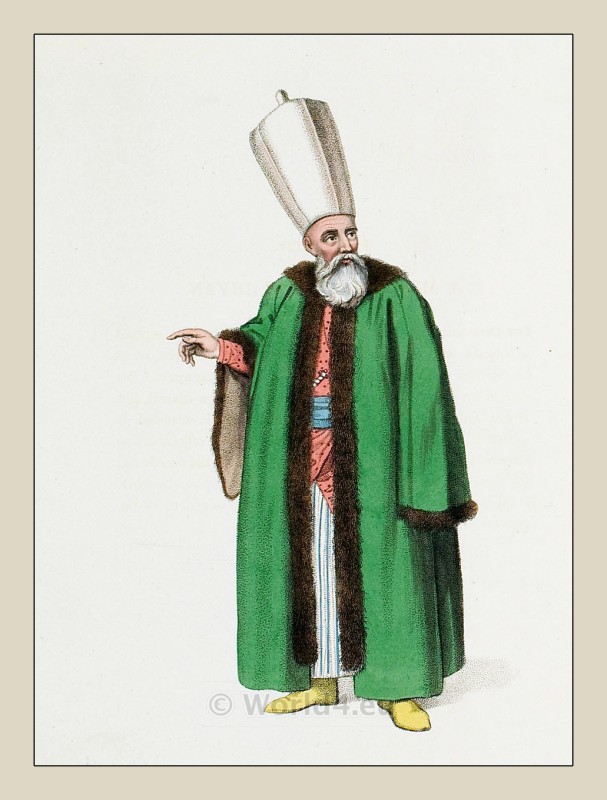A Hamal or common porter.
Historical Ottoman Empire officials and ethnic groups.
THESE men are very numerous, particularly at Pera (Beyoğlu), where they are employed in reming the various goods and merchandise. Those, who are of Armenian origin, are reckoned the strongest, and carry an immense weight; sixteen of them, (according to Dallaway) with their arms in some manner interlaced, will frequently carry up the steep declivity from the quay of Galata (Karaköy) a cask of wine of such immense weight, suspended by a pole, that each person must support near three hundred pounds.
The mode, in which they individually carry, is seen in this plate, and differs from the English, who confine the burden entirely to their shoulders, while the Turks distribute it between the shoulders and the hips.
Source: The costume of Turkey. Illustrated by a series of engravings; with descriptions in english. By Octavian Dalvimart. Printed by Howlett and Brimmer. Published in London, 1802.
Related Galleries:
- Costumes and scenery of Afghanistan.
- Historical costumes of Japan and Java.
- History of the Indian Tribes of North America.
- Typical pictures of Indian Natives.
- Traditional Switzerland National Costumes
- Traditional Dutch national costumes.
- Traditional French national costumes.
- Country, Character, and Costumes in Portugal and Spain.
- Folk dresses from Norway, Dutch, Germany and Hungaria.
- Traditional folk costumes of Italy and France in 1821.
- The Serbs in the Adriatic. Their types and costumes 1870-1878.
- Provincial Russia. Russian Costume and Culture.
Discover more from World4 Costume Culture History
Subscribe to get the latest posts sent to your email.







